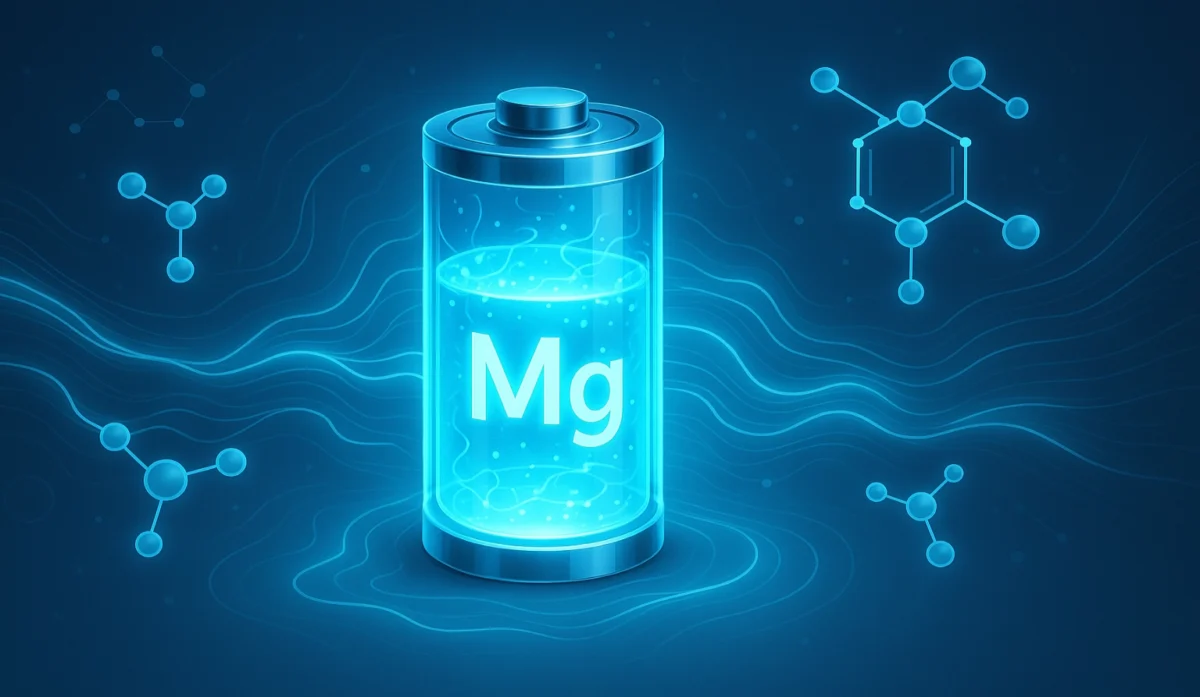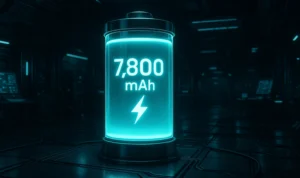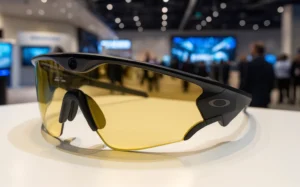Imagine charging your phone on Monday and not worrying about it again until Wednesday. That’s the kind of leap scientists at the Indian Institute of Science (IISc) believe magnesium batteries might one day deliver. Their latest research suggests that magnesium, with its unique chemistry, could store nearly twice the energy density of today’s lithium-ion cells.
This isn’t just lab hype. The team combined material science and machine learning to show how a small tweak — making electrodes less rigid — might open the door to a whole new generation of energy storage.
Why Magnesium Is Generating Buzz
Lithium-ion batteries, which power everything from smartphones to EVs, are based on a one-electron system: each lithium atom moves just one electron when charging or discharging. Magnesium? It moves two. That means more charge in the same space — like carrying two suitcases instead of one (Saur Energy).
There’s also a safety angle. Lithium batteries can form dangerous needle-like growths called dendrites, which sometimes lead to fires. Magnesium is far more stable in that regard (Wikipedia). And unlike lithium, magnesium is relatively abundant, so supply chains wouldn’t be as fragile.
Crystals vs Amorphous: IISc’s Big Idea
Here’s the catch: magnesium ions are slow movers in solid crystalline electrodes. They tend to get “stuck” in narrow pathways, which limits performance.
The IISc researchers tackled this by shaking up the structure itself. Instead of using neat, rigid crystals, they worked with an amorphous version of vanadium pentoxide (V₂O₅). In plain terms, it’s like swapping a city grid of straight highways for a jumble of winding streets where ions can weave through more easily.
To test their idea, they used machine learning models alongside simulations. The results were dramatic: ion mobility was up to a million times faster in the amorphous material than in the crystal version (IISc). Their findings were detailed in a recent preprint (arXiv).
Putting It Simply: The Traffic Analogy
Think of ions like cars. In a crystalline electrode, cars are stuck on rigid highways with endless traffic jams. In an amorphous electrode, those highways disappear — now there are countless side streets and shortcuts. Cars can move freely, reach destinations faster, and the whole system works more smoothly.
That’s essentially what IISc achieved: a freer, faster movement of magnesium ions, which could translate to higher battery efficiency.
Why It Matters Beyond the Lab
If this approach works outside simulations, the upside is huge:
- Double the energy density: More range for EVs, longer battery life for devices.
- Lower cost potential: Magnesium is widely available and cheaper than lithium.
- Better safety: Less risk of overheating or short circuits.
- Sustainability: Smaller environmental footprint compared to lithium mining.
In fact, industry watchers have already noted that magnesium might become a strong contender for grid-level storage in the future (Electronics Weekly).
But There Are Hurdles Too
No breakthrough is without its “but.”
- Voltage loss: The amorphous design could reduce voltage by up to 14%.
- Scalability: Making amorphous materials at scale is tricky and expensive.
- Experimental proof: Right now, most of this is simulation. Actual prototypes will take years to develop and test.
So while the promise is real, magnesium batteries won’t replace lithium-ion in your laptop next year.
Frequently Asked Questions (FAQs)
Q1: Does 2× energy density mean my phone lasts twice as long?
Not exactly. The study shows the potential, but real devices depend on design, manufacturing, and safety checks.
Q2: Why did IISc use vanadium pentoxide (V₂O₅)?
It’s a well-known cathode material, and when made amorphous, it allowed magnesium ions to move much more freely.
Q3: When could we see magnesium batteries in real products?
Experts say large-scale validation could take 10–15 years. For now, it’s still early-stage research.
Conclusion & Key Takeaway
The IISc study opens an exciting path: magnesium batteries that could one day store twice the energy of today’s lithium systems. With safer chemistry, abundant resources, and smart use of amorphous materials, magnesium may emerge as a powerful alternative — but the journey from computer models to real-world devices is still ahead.
Key Takeaway: Magnesium batteries are promising, but scaling the IISc discovery will be the real test.
Last Updated on October 18, 2025 by Lucy




